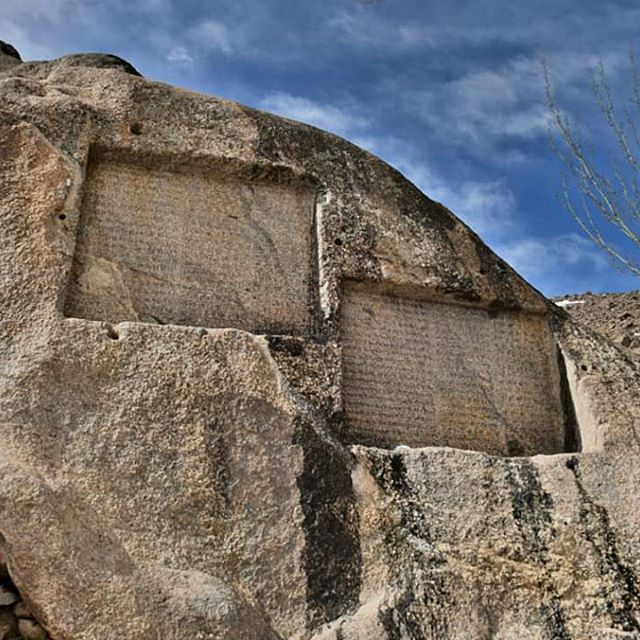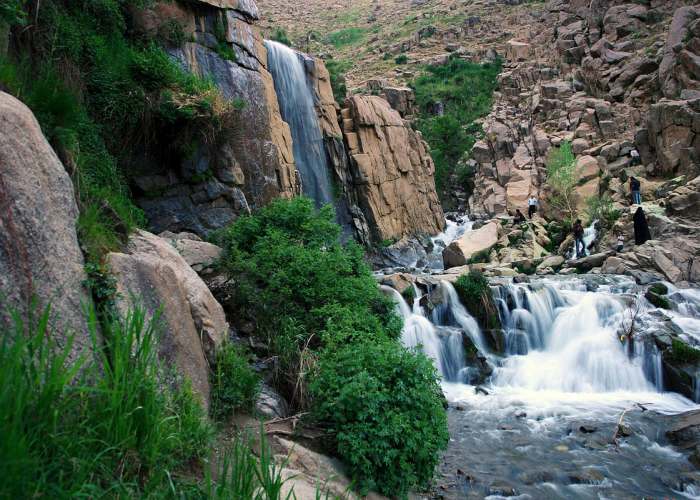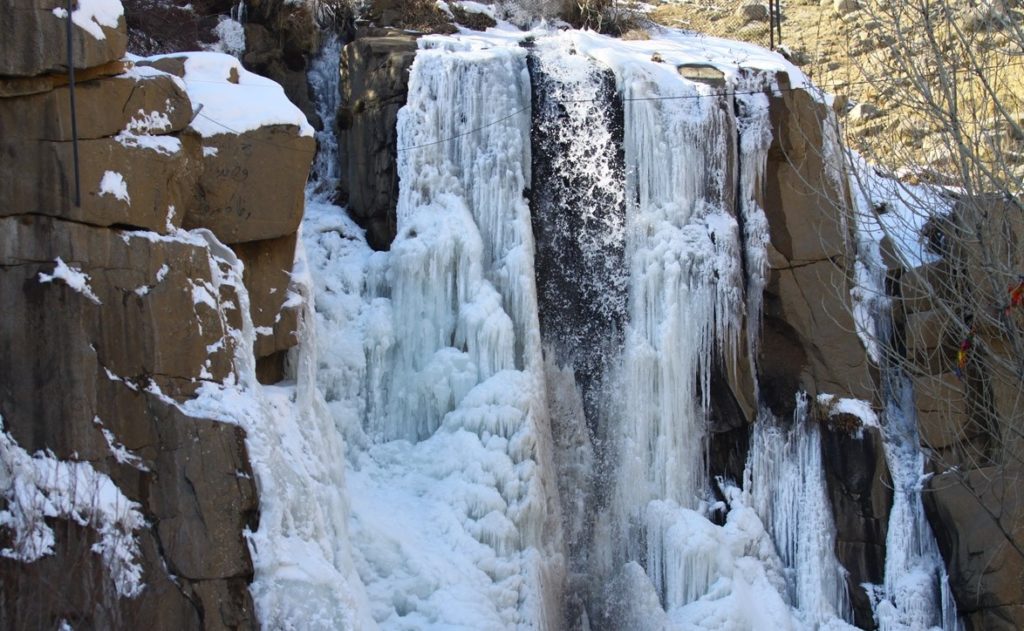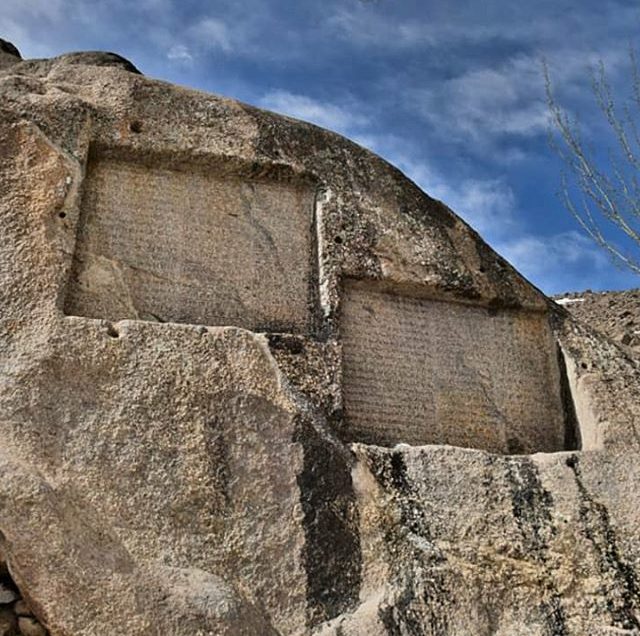
Ganj Nameh گنجنامه is an ancient inscription, 5 km south-west of Hamedan on the side of Alvand Mountain in Iran. The inscriptions were carved in granite in two sections.
The one on the left was ordered by Darius the Great (521-485 BC) and the one on the right by Xerxes the Great (485-465 BC). Both sections were carved in three ancient languages: Old Persian, Neo-Babylonian, and Neo-Elamite. The inscriptions start with praise of the Zoroastrian God (Ahura Mazda) and describe the lineage and deeds of the mentioned kings.
Later generations who could not read the Cuneiform alphabets of the ancient Persian assumed that they contained the guide to an uncovered treasure; hence they called it Ganjnameh. The name literally means “treasure epistle”, but it has also been called Jangnameh (Persian: جنگنامه) whose literal translation is “war epistle”.
Translation of Darius’ Inscription
A great god is Ahuramazda, who created this earth, who created yonder heaven, who created men, who created happiness for man, who made Darius the king. One king for many, one lord for all.
I am Darius, the great king, king of kings, king of countries containing all kinds of men, King in this great earth far and wide, son of Hystaspes, an Achaemenian.

https://www.kojaro.com/attraction/6433-%D8%A7%D8%A8%D8%B4%D8%A7%D8%B1-%DA%AF%D9%86%D8%AC-%D9%86%D8%A7%D9%85%D9%87/

http://www.baharnews.ir/gallery/120992/2/%DB%8C%D8%AE-%D8%B2%D8%AF%D9%86-%D8%A2%D8%A8%D8%B4%D8%A7%D8%B1-%DA%AF%D9%86%D8%AC%D9%86%D8%A7%D9%85%D9%87-%D9%87%D9%85%D8%AF%D8%A7%D9%86
Ganj name Waterfall is one of the most important waterfalls of the province and located in the route to ascend Alvand mountain elevations and beside Ganj nameh inscriptions.
This waterfall flows down from a height of about 12 m. and is known as the water of Abbas Abad. Its average output is 200 liters/second.
The waterfall has permanent water and is running in winters too.
The existence of icicles in cold seasons multiplies the beauty of the waterfall and attracts a great group of ice-climbers. Rock-climbers climb around the rocks surrounding Ganjnameh waterfall, during warm seasons of the year as well.
Source:
http://ganjname.com/p/6642-Ganjnameh-Waterfall
https://www.livius.org/articles/place/gandj-nameh/gandj-nameh-darius-inscription/


